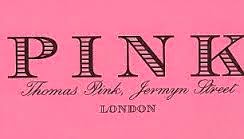
VICTORIA’S SECRET NO LONGER IN THE PINK: THOMAS PINK WINS IN TRADE MARK FIGHT
On 31 July 2014, the High Court of Justice handed down its judgment in Thomas Pink Ltd v Victoria’s Secret UK Ltd [2014 EWHC 2631 (Ch)]. Birss J ruled that Victoria’s Secret’s use of its sub-brand PINK had infringed Thomas Pink’s trade marks for PINK, as the average consumer was likely to be confused by the similarity of the signs.

trade marks, with Birss J upholding the validity of Thomas Pink’s UK trade mark, despite the fact that it had not been used in precisely the form registered.
Background
The claimant, Thomas Pink Limited (“Thomas Pink”), began trading in London in 1984, primarily selling men’s shirts, but its business has since diversified to include other clothing items and all of its goods are sold under and by reference to the names Thomas Pink and PINK. Thomas Pink is the proprietor of two trade mark registrations: (i) Community Trade Mark No. 3,949,906 filed on 14th July 2004 in Classes 3, 14, 18, 25, 26 and 35 (the “CTM”):
The defendant, Victoria’s Secret UK Ltd (“Victoria’s Secret”), is part of a group which sells the famous Victoria’s Secret line of lingerie which is known worldwide. In 2004, the Victoria’s Secret group launched a
sub-brand in the US called PINK, which now has stand-alone PINK branded stores. In 2012, Victoria’s Secret began opening retail outlets in the UK. In its UK PINK stores (although there was some debate in
the case as to whether Victoria’s Secret had stand alone PINK UK stores), Victoria’s Secret sell a wide variety of casual clothing, many of which present the word PINK alone in a prominent way.
From: legalweeklaw.com
